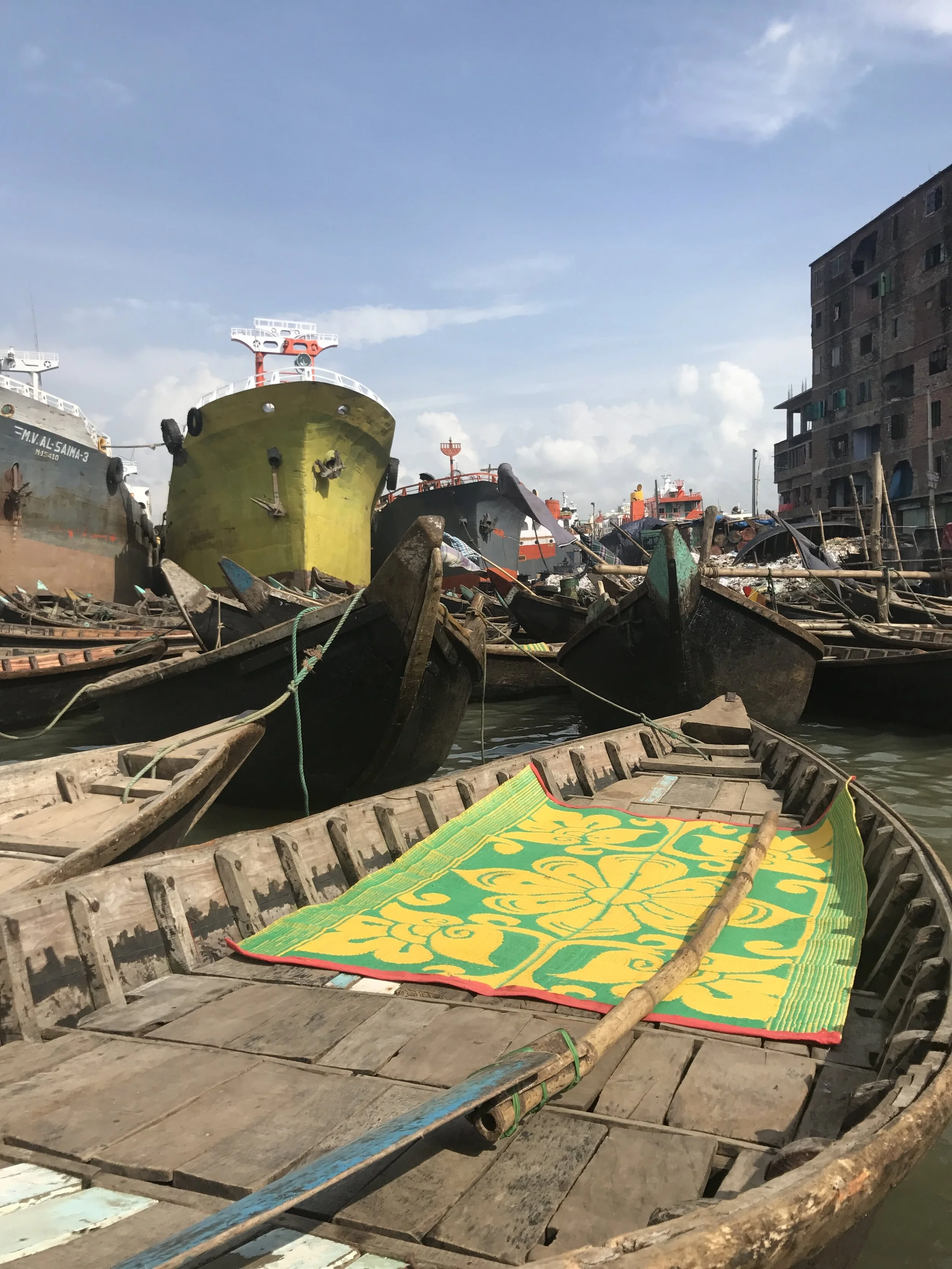Mishmash Bangladesh
It is everything you expected and nothing you imagined.
Traffic itself has its own breath, molded on soft rules that must have evolved from the complex formula of culture multiplied by trial and error. Lane markings are purely decorative and road signs a suggestion. Trucks dare, rickshaws throw gibes, CNGs ignore physics, and cars bulldoze - all the while playing a strategic game of blasé shuffling.
You blink, you lose.
Dhaka and Chittagong are cities bursting with sights, sounds, and smells - not all of them pleasant but each a blast to your senses. Car horns chide, alert, excuse, warn, nag, scold. The day starts with a cacophony of toots and honks and ends never. Sidewalks are well paved and clean when they are, and non-existent and littered when they are. This is a country that burns and floods simultaneously. This is a country that rides horse-pulled carriages beside cars from the 80s with pull-up car locks, abreast the latest model of Mercedes. This is a country where the majority owns cameraless (the horror!) phones with number pads while walking past rows of OPPO smartphone ads plastered on pillars. This is a country that runs barefoot in sewage rising from their drains while students are picked up from Chittagong Grammar School by drivers carrying their bags. This is a country with a handful of tourists and hotel room prices that match Singapore's. You cannot but marvel at the ironies and notice the nuances in culture both within and without.
You get heartburn from the curries, muse at the variety of Chinese cuisine, wonder about their omelettes at breakfast, and delight at the authenticity of their Sri Lankan food. The buildings are muted, blending into each other, construction site beside nondescript construct beside repetition, yet against this drab landscape they rejoice in colours. The rickshaws are painted and adorned to put Jeff Koon to shame, the salwar kameez comes in every imaginable shade, and dents on buses are painted with broad strokes of clashing colours as if to celebrate every knock. The country buzzes and makes no bones about it.
The parks in the evenings are packed, youths playing soccer beside children batting at a cricket ball beside old men watching the goings-on beside a photography session involving a brightly dressed group beside vendors pouring out hot coffee, selling towers of cotton candy, and flocks of helium balloons. You love it, it drives you nuts. The boardwalk facing the port is as burdened. You walk along it, watch families gather, friends group, children taunt, and minds unwind. It's crazy, it's camp, it's communal, it's comforting.
There is a distinct imbalance in the men-women ratio on the streets. You wonder where the women are. The men man the shops selling women's clothes, the men man the shops selling menswear. You're foreign, you're female, and you're obnoxiously different and defiant, your scarf drapes around your face more a challenge than a deterrent. They stop and watch and do not look away even when you catch them. The workmen set their tools down on the rooftop of a half-constructed building and gather at its edge to watch you walk down their streets. The rickshaw riders watch you, refusing to drop their gaze even as they pedal into unforgiving traffic. Shopkeepers stand in their dark doorways to watch your nervousness as the rain falls, and the drains rise, while you huddle on a stoop for shelter. You feel unnerved but you never feel threatened. They watch and they won't look away, but they will not approach.
Perhaps it is curiosity, perhaps it is admonishment at your audacity prowling their streets. Perhaps it is a reminder that you've traveled all this way to watch them as they are watching you.



